Central Air – Application: Residential and Commercial – Product: Cold Air Only – 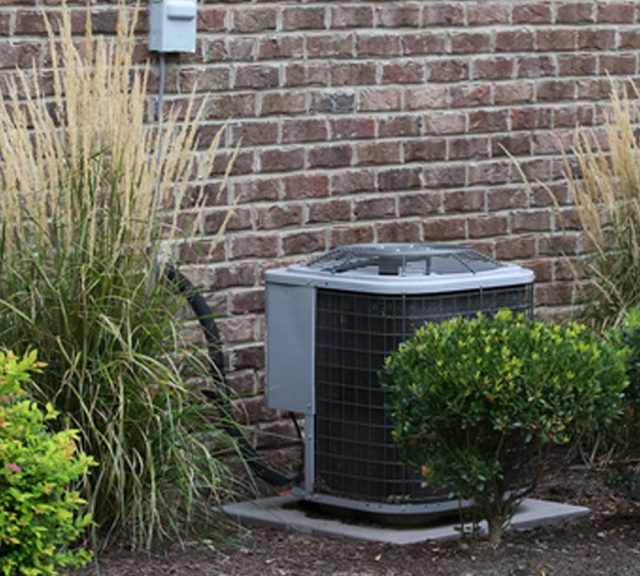 One of the most common in a Canadian home situation, where it is an additional external unit that ties in with existing duct work. This only provide air conditioning, if heat is required, it is generated from the furnace that is typically attached to the existing duct work. (Not all air conditioning unit options are air only – wall mounted heat pumps do both air conditioning and heating, for example).
One of the most common in a Canadian home situation, where it is an additional external unit that ties in with existing duct work. This only provide air conditioning, if heat is required, it is generated from the furnace that is typically attached to the existing duct work. (Not all air conditioning unit options are air only – wall mounted heat pumps do both air conditioning and heating, for example).
Ductless Wall Mounted Air Conditioner Heat Pumps – aka Mini Splits – Application: Residential and Commercial – Product: Cold Air and Heat – Mini splits are a great zone cooling / heating option for existing buildings which have heat, but need a bit of a boost in a particular room, such as a room that receives a lot of sunlight, an attic, basement, bonus room over, a seniors room, or sensitive individual who needs better climate control etc. They act as an air conditioner in summer and a heat pump for winter.
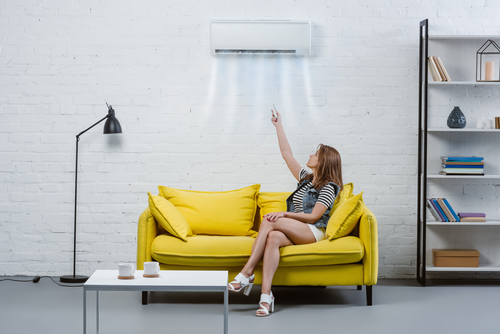 For commercial applications heat pumps, as they are commonly called, are used as supplemental climate control for office buildings, storefronts, multiplexes and condos. They are very quiet and there is no duct work required, but a small 2 ½” or so access hole through an exterior wall to allow the control unit to connect to the outdoor condenser. Mini splits can be dual units such that one outside unit can service 2 inside units, which can also be on different floors (ie: Attic & Main floor).
For commercial applications heat pumps, as they are commonly called, are used as supplemental climate control for office buildings, storefronts, multiplexes and condos. They are very quiet and there is no duct work required, but a small 2 ½” or so access hole through an exterior wall to allow the control unit to connect to the outdoor condenser. Mini splits can be dual units such that one outside unit can service 2 inside units, which can also be on different floors (ie: Attic & Main floor).
Each unit has its own remote, such that it is controlled in the room it is used. These are a great option for old Toronto homes, such that no access behind walls is needed (Nor any surprises behind the wall found). No water access is needed unlike fan coil units. They are not recommended as a primary heating or cooling source in Ontario because once the temperature plummets below 20°C they are unable to handle the load. However above those temperatures they are extremely energy efficient and all around excellent units if choosing a quality name brand such as Mitsubishi.
PTAC’s (Packaged Terminal Air Conditioner) – Applications: Commercial mainly some Residential esp condos – Product: Cold Air (some are dual with heat as well) – Think “old hotel” this is typically the noisy unit that was installed in the wayback era. Although they are sleeker and more energy efficient these days, usually a heat pump (ductless wall air/heat unit) is the way to go nowadays. Many but not all PTAC’s are “through the exterior wall” units – where a large hole needs to be cut into an exterior wall the size of the unit – the unit sits in a sleeve and a grate or grille is placed on the back of the unit to conceal it and allow for airflow. These are generally seen in older hotels and apartment units, as before the advent of the mini-split, PTAC’s are one of a few options they had for individualized climate control. They are much noisier than a mini-split because the condenser is not fully on the outside of the unit it is packaged in with the air/heating unit. A ductless heat pump – the condenser is on the outside of the building. PTAC’s generally tie in with the existing boiler system of the building as well, whereas a mini-split does not require any additional amenities.
Fan Coil Units & Water Sourced Heat Pumps – Applications: Commercial, Industrial mainly, some Residential esp condos – Product: Cold Air and Heat – 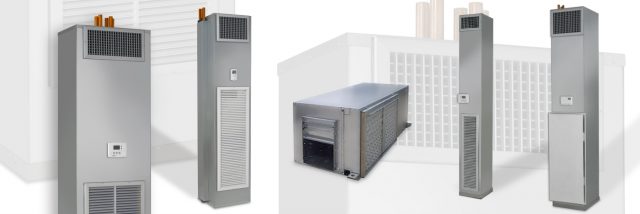 We’ve probably all seen a riser fan coil but just not noticed it consciously. These units are everywhere in a myriad of applications. These units come in all shapes and sizes, fit inside walls with only a flush grate or grille showing, or inside on a surface wall as a console, even inside closets, bulkheads, wherever and whenever they are used – they are highly customizable. Fan coil units are now super quiet and astoundingly efficient. They generally require a hookup to existing boiler or steam system, yet provide a lot of output and have a great user satisfaction rating. The majority of high rise buildings use these, especially ones with individualized climate controlled units such as condos, apartments, hotels, office buildings etc.
We’ve probably all seen a riser fan coil but just not noticed it consciously. These units are everywhere in a myriad of applications. These units come in all shapes and sizes, fit inside walls with only a flush grate or grille showing, or inside on a surface wall as a console, even inside closets, bulkheads, wherever and whenever they are used – they are highly customizable. Fan coil units are now super quiet and astoundingly efficient. They generally require a hookup to existing boiler or steam system, yet provide a lot of output and have a great user satisfaction rating. The majority of high rise buildings use these, especially ones with individualized climate controlled units such as condos, apartments, hotels, office buildings etc.
RTUs / AHUs – Applications: Commercial, Industrial – Product: Cold Air and Heat – 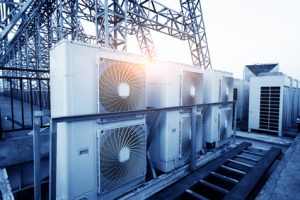 These units are what one typically would see on the top of a warehouse or low rise, mid rise and even high rise. For heating large open spaces such as schools, open concept office spaces, warehouses, hotels main public spaces, medical buildings, attractions, grocery stores, retail stores, malls, libraries… any large space that looks like a cube, generally has one or multiples of these. RTU’s (Rooftop Units) are exactly what they sound like, a large heating and cooling unit (or units depending on zones needed) packaged in a weather resistant housing which provides the condensing power through the venting system from the top down. (Boiler units work from the bottom up). AHU’s (Air Handling units) are not necessarily rooftop units, sometimes they are outside a warehouse tucked in a corner or other space, and provide, the heating and cooling components for the building via a venting system).
These units are what one typically would see on the top of a warehouse or low rise, mid rise and even high rise. For heating large open spaces such as schools, open concept office spaces, warehouses, hotels main public spaces, medical buildings, attractions, grocery stores, retail stores, malls, libraries… any large space that looks like a cube, generally has one or multiples of these. RTU’s (Rooftop Units) are exactly what they sound like, a large heating and cooling unit (or units depending on zones needed) packaged in a weather resistant housing which provides the condensing power through the venting system from the top down. (Boiler units work from the bottom up). AHU’s (Air Handling units) are not necessarily rooftop units, sometimes they are outside a warehouse tucked in a corner or other space, and provide, the heating and cooling components for the building via a venting system).
Window Air Conditioners, Portable Units and Through the Wall Air Conditioners – Residential – Product: Cold Air Only – a window air conditioner does what it says, it is a unit that is secured balanced between the inside and the outside of the window providing cool air only. It is generally a temporary situation that is installed in the spring and removed in the fall, as there are air gaps around the unit typically. It is not secure but people still use it in as an option in an apartment for example, where the landlord will not allow any retrofitting to the building for any other unit (other than portable). They typically only cool 1-2 rooms, but some people find this is better than nothing if it is hot.
Generally for Canadian summers where there are only a few hot weeks in a span of 2 or so months, many prefer portable air conditioner units in this situation, as they are far more energy efficient than previous years, each portable unit can handle approx 400 sq ft per unit, and far less obtrusive and cumbersome. Plus, the view is much better when a window remains a window, and not a gateway for a unit.
Through the wall air conditioners are just that – like the window unit in functionality, however a hole the size of the unit is cut through the exterior wall, and placed in a sleeve, and ideally insulated. They are essentially a permanent “window” type unit, which is mounted through the wall instead of the window. They are noisier than a mini-split heat pump, and less efficient than a ductless wall mounted system, plus the wall mounted system only requires a 2.5” approx hole. However, there is no additional outside unit to contend with, however the excess noise may not be a good tradeoff – as well as a ductless system will also provide heat in the winter where a through-the-wall-air-conditioner is only air.
Note: At Heating Ontario we do not install window air conditioners, or portable units, however we do install the remainder of the Commercial, Industrial and Residential air conditioning applications, air filtration, air exchangers and service and install boiler systems etc.
Geothermal – Applications: Residential mainly, some commercial – Product: Heating and Cooling – This is a brilliant solution for the lowest fossil fuel option. Although some electricity is needed by the fans to circulate the air, it is nature that does the heating and cooling. As a form of renewable energy, geothermal uti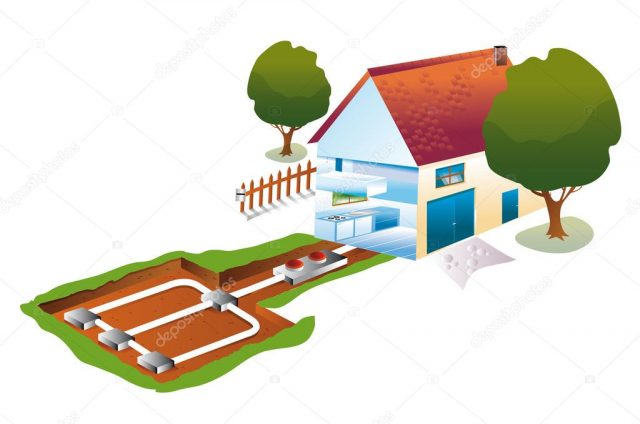 lizes the subsurface hot water (steam) created by heat generated beneath the earth’s surface. It’s essentially nature’s boiler. Geothermal as electricity generation is currently being used in 26 countries and over 70 countries are using it as their heating source.
lizes the subsurface hot water (steam) created by heat generated beneath the earth’s surface. It’s essentially nature’s boiler. Geothermal as electricity generation is currently being used in 26 countries and over 70 countries are using it as their heating source.
In Switzerland, over 70% of the homes use geothermal as their main heating and cooling option. It does cost more upfront, and it does require land space for the pipes to run (think similar to a radiant heating grid), however running costs are minimal and there is no fossil fuel to fill up any tanks or run as supply lines. A decent off grid solution, especially if using solar power to run the minimal electricity needed for the fans. Fan coil units or heat pumps, depending on how it is set up are needed to convert the energy into heating or cooling, and there are specific ones designed to be compatible to these systems.
Some systems can be designed to supply domestic hot water (DHW) as well (desuperheater), considering hot water generation can be as much as 50% of an electrical bill for a standard tank, this is worthy of consideration if considering Geothermal. Geothermal is approx 4 times more efficient than standard heating options, and can also tie in with radiant in-floor heat or hydronic floor heating (and driveways).
Of course large industrial applications also use robust boiler systems which are beyond the scope of this article, and depending on the age of the building could require retrofitting. However in general the top applications discussed above are commonly used in the HVAC industry today.
ABOUT US:
Heating Ontario is a Family Owned Canadian Company! For an instant free estimate, call us at 647-591-2683 or see our locations on our contact us page.
Types of Buildings Heating Ontario Services:
- Warehouses
- Retail stores & Grocery stores
- Offices: high rise, low rise and ground floor
- Townhouses, walk-ups, low rise, homes, condos, lofts
- Seniors homes, long term care facilities, retirement homes
- Real estate buildings & holdings, high rises, rental properties
- Medical buildings & Hospitals, Doctors offices, Chiropractors, Physio
- Schools; Elementary, Secondary, Public, Private; Day-cares, Universities, Colleges
Call us if your building isn’t listed above, we can make arrangements.
Do you have multiple workplace facilities, franchises, homes, offices or retail space?
No need to deal with multiple companies, technicians and locations – One call will solve it all at 647-591-2683
Heating Ontario is fully licensed and offers fast efficient appointments.
Commercial & Industrial Services:
- 24 Hours Emergency Heating Service
- Commercial & Industrial boilers and steam boiler installs, repair & service
- Furnace Install & Service (maintenance and repair)
- Central A/C Installation, Repair and Maintenance
- Natural Gas Line Installation
- Radiant Floors and Driveways
- Tankless Water Heaters
- Ductless A/C
